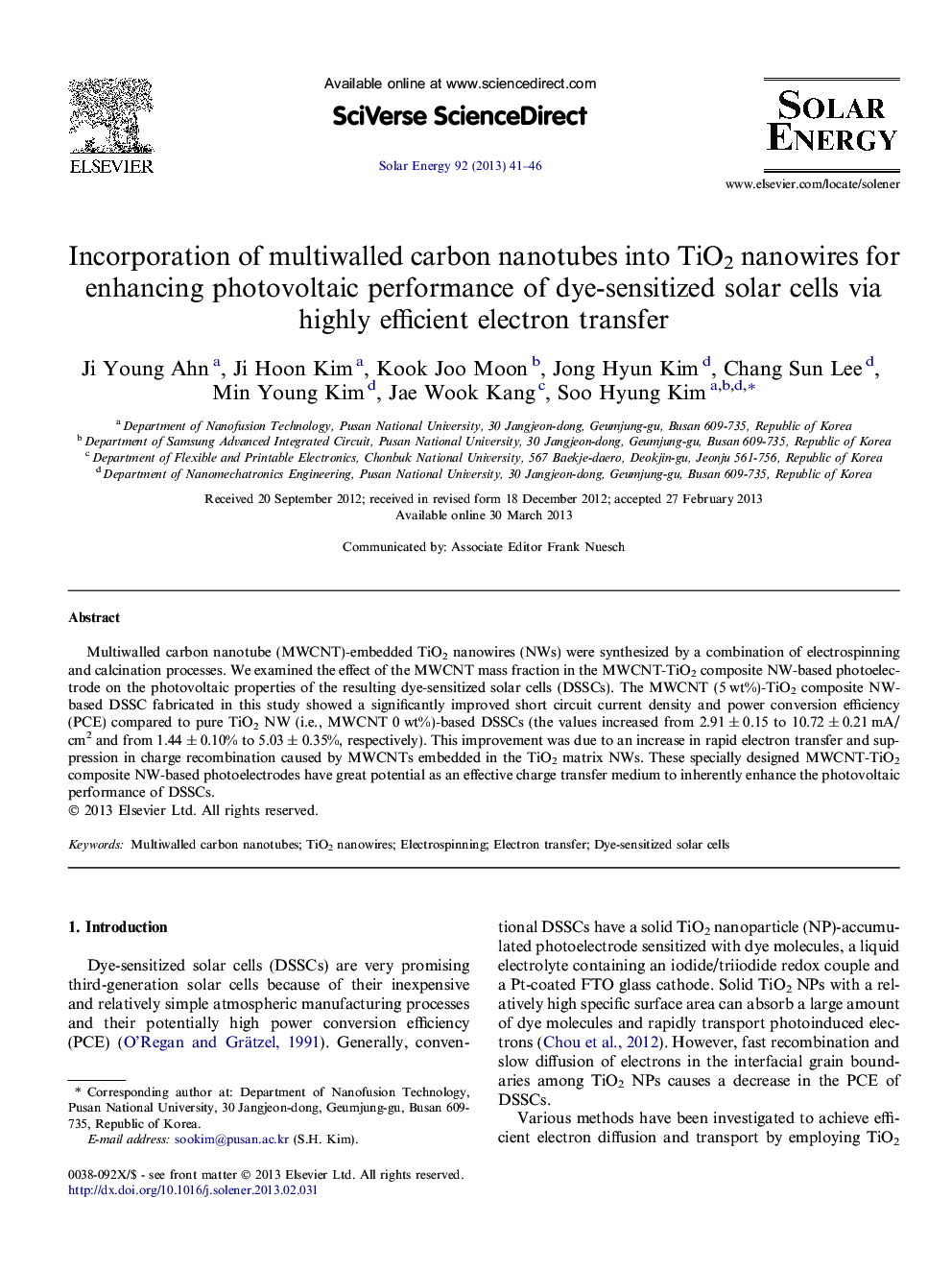| Article ID | Journal | Published Year | Pages | File Type |
|---|---|---|---|---|
| 1550536 | Solar Energy | 2013 | 6 Pages |
•MWCNT-TiO2 composite NWs are formed via electrospinning and calcination processes.•MWCNT content is varied in the MWCNT-TiO2 composite NW-based DSSC photoelectrodes.•MWCNT incorporation in TiO2 matrix NWs improves the photovoltaic properties of DSSCs.•MWCNTs act as efficient charge transfer medium in TiO2 matrix NWs.
Multiwalled carbon nanotube (MWCNT)-embedded TiO2 nanowires (NWs) were synthesized by a combination of electrospinning and calcination processes. We examined the effect of the MWCNT mass fraction in the MWCNT-TiO2 composite NW-based photoelectrode on the photovoltaic properties of the resulting dye-sensitized solar cells (DSSCs). The MWCNT (5 wt%)-TiO2 composite NW-based DSSC fabricated in this study showed a significantly improved short circuit current density and power conversion efficiency (PCE) compared to pure TiO2 NW (i.e., MWCNT 0 wt%)-based DSSCs (the values increased from 2.91 ± 0.15 to 10.72 ± 0.21 mA/cm2 and from 1.44 ± 0.10% to 5.03 ± 0.35%, respectively). This improvement was due to an increase in rapid electron transfer and suppression in charge recombination caused by MWCNTs embedded in the TiO2 matrix NWs. These specially designed MWCNT-TiO2 composite NW-based photoelectrodes have great potential as an effective charge transfer medium to inherently enhance the photovoltaic performance of DSSCs.
